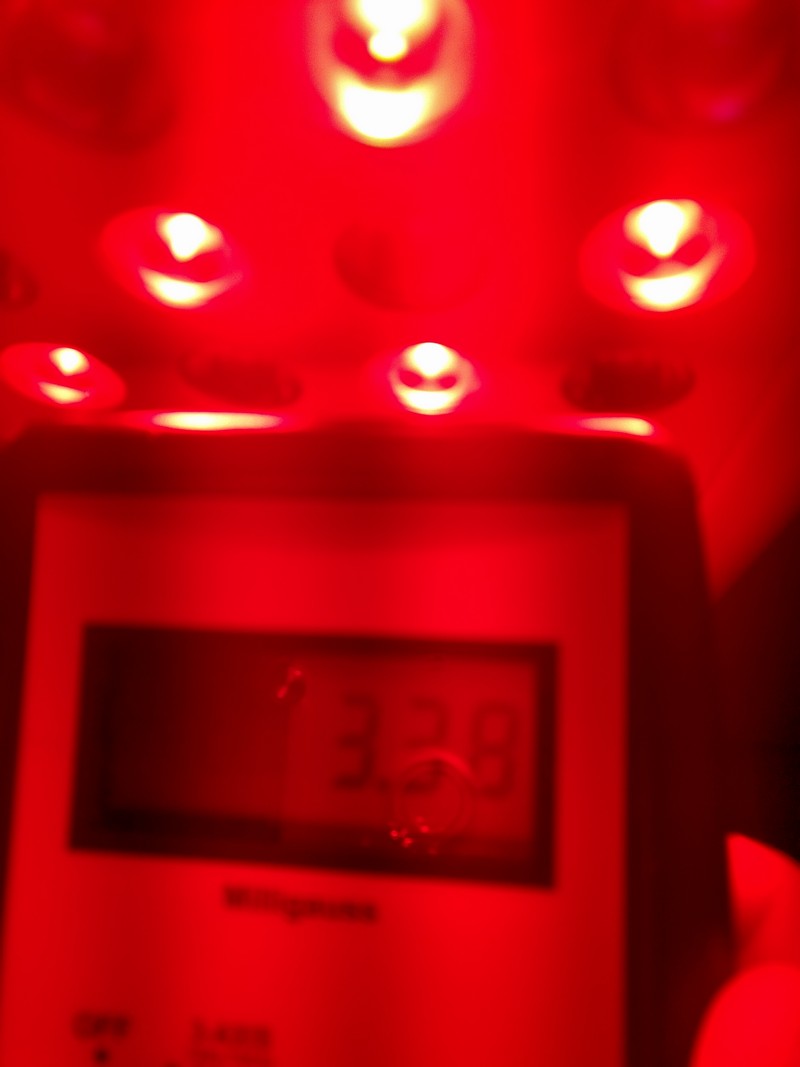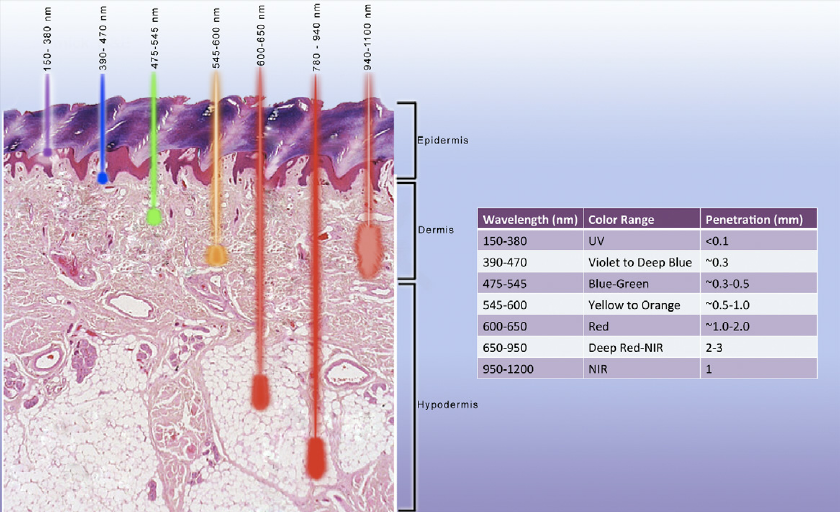
For all of the season’s pleasures, November and December have a funny way of taking an unwanted toll on skin. And while protection from the harsh outdoor rays is key, the dehydration, accumulated sweat, and daily layering of SPF can often lead to seriously blocked pores. Fortunately, a specialized wave of high-tech devices secreted away at your doctors’ offices may prove to be the answer to gorgeous-looking skin that defies weather, hormones and your weekend sugar binge.
Inspired by NASA tech, LED photobiomodulation may sound space age but is not all that new. It has been around for some time and its proven track record has spawened a whole wave of home devices in its wake. But if you are looking for seriously good skin, here’s why you should be opting for a visit to your derm for LED Red therapy instead of using the pen-like device touted by beauty counters.
Read More: 5 Reasons Why Should Start Ultherapy
 Acne & Marks
Acne & Marks

In a study, acne treated with red light therapy for eight weeks showed profound improvements in terms of reduced inflammation and accelerated healing. On top of that, “LED Red has a bactericidal effect on certain species of microorganisms, most notably the families of bacteria linked to acne, infections and tooth decay” says Dr Chua Han Boon, aesthetic doctor at SW1 Clinic. It is often combined with the blue version of photobiomodulation which is said to have a direct anti-acne effect on skin. Why does LED photobiomodulation work on acne? The acne-causing microorganisms usually have some sort of light-sensitive pigment inside their bodies, which erupts in a destructive chain reaction when exposed to light. Acne bacteria and candida species are a good example of this. Basically, photobiomodulation will kill the problematic organisms, without harming our own cells (and even benefiting us at the same time), and according to doctors, a protocol that alternates between the two will give optimal results.
Read More: 4 Reasons Why You Need to Start BBL Treatments Early
 Wrinkles & Sagging Skin
Wrinkles & Sagging Skin
LED Red directly supports the core processes of your skin cells. This gives twin benefits: immediate and preventive. For example, you will be able to delay aging with red light.
It’s the energy of the photon that’s being utilize by the body. Just as a plant uses light energy to generate complex molecules via chlorophyl, our own chromophores utilize the energy of the photons to do much the same, just for a different set of reasons: changing membrane potential, enhancing oxygen utilization, generating ATP (energy). More energy in your skin cells means an ability to recharge, heal and rejuvenate itself.
Not all wavelengths of red and infrared light are optimally absorbed by the mitochondria. Led Red has a narrow therapeutic wavelengths to ensure maximal absorption.

If you were to choose wavelengths that are not optimal, the energy would be mostly wasted. This is why traditional bulbs such as incandescent or halogen use a lot of these intermediary wavelengths that do not have any proven therapeutic effects, because they do not emit enough light at the very specific wavelength peaks. This is also why home LED devices may not show substantial benefits.
It’s important to use a light with a wavelength that actually has a biological impact on the issue you are trying to solve. We want the right type of photons hitting our body. Some lights actually use a white or blue wavelength of light and add a red filter. In other words, the LED driver is based on blue light and it only looks red because there is a red filter over the light. We want pure wavelengths of light, not just a red filter that might not give off enough red light in the wavelength we want. Other lights do use a true red wavelength but use one that has not yet been shown to be biologically helpful.
The most beneficial of these peaks are in the range of 660-670 nm and 830-850 nm. These wavelengths have been proven to produce substantial improvements in cellular function with a wide range of resulting benefits including improved skin health, enhanced muscle recovery, reduced joint pain, increased testosterone, and even weight loss! Alternatively, other wavelengths such as 700 nm or 720 nm have almost no biological effects. So, it’s critical to choose a device that delivers optimal wavelengths of light.
Another reason why in-clinic devices may triumph at home light devices is the Intensity. In short, do you want to be sprayed by a fire hose or a sprinkler?
It’s all about intensity. The fire hose pushes more water out of the hose in a given time than the sprinkler.
Same concept with lighting, except instead of water, it’s photons. Intensity matters when specific wavelengths are research for specific effects, which is demonstrated in this study. In this study, wavelengths of 660 and 810 nm with the fluency 8 J/cm2 demonstrated the potential to reduce cognitive impairments associated with aging and mitochondrial dysfunction. But when the fluency was at 4J/cm2 the light had minimal effect. 8 J/cm2 is a lot of energy. Just changing the wavelength slightly or the combination of wavelengths would change the results.
While intensity matters, it’s not everything. Too high is bad. Too low will not yield a benefit.

This is called a biphasic response. Too much light causes the opposite of what we’re trying to achieve. Too little light has no effect.
So higher intensity is not better. LLLT has a dual response curve. Meaning if the intensity and light delivered is too high, a negative effect will occur. If it’s too low, no effect will occur.
So we conclude that if you want to get the optimal dose of light without falling off the sides of this curve, it is best to consult a professional instead of standing in front of a traffic light.
Read More: 5 Ways Vitamin A Can Change Your Skin for the Better
 Pigmentation
Pigmentation
Red light seems to prevent hyperpigmentation after sun exposure, reducing the skin inflammation (sunburn or erythema) in an effect equivalent to SPF 15. In this respect, red light has a “normalizing” effect. Since it helps our skin cells to make energy, it supports their normal function.

“In addition to the usual arsenal of lightening creams and lasers, I usually recommend my patients to employ LED Red to help lighten their pigmentation and keep it away for longer” says Dr Chua
As you can see, red light has a deep penetration depth of compared to other forms of light, such as UV, blue, green, or the longer infrared wavelengths, meaning that the red light can reach deeper bodily tissues, thereby allowing it to effect changes that are deep within the skin.
Read More: 3 Dermatology Lifts You Need to Try
